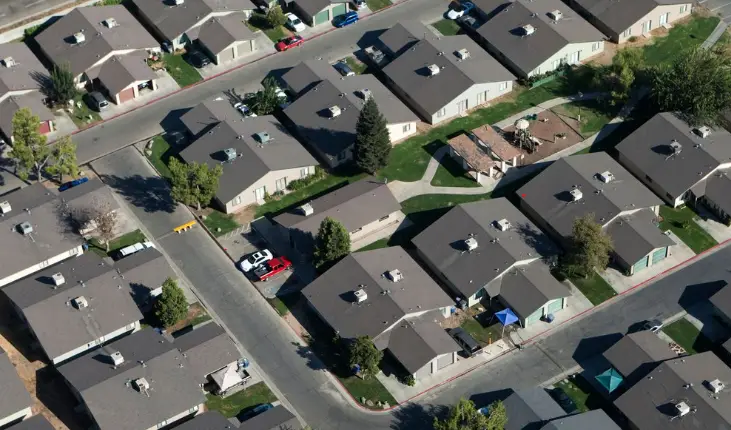Does it snow in fayetteville arkansas
Fayetteville, Arkansas is located in the Ozarks, a mountainous region in the central United States. The Ozarks experience all four seasons, including snow in the winter. Fayetteville generally sees a few snowstorms each winter, with the occasional major snowstorm. The city is well-prepared for snow, with a fleet of snowplows and salt trucks to keep the roads clear.
What are winters like in Fayetteville Arkansas?
Fayetteville, Arkansas is located in the Ozarks, a mountainous region in the central United States. The Ozarks experience all four seasons, including a cold winter. Fayetteville winters are usually cold and dry, with temperatures averaging in the low to mid 30s. However, it is not uncommon for temperatures to dip below freezing, especially at night. Snow is also a possibility in Fayetteville, although it is not as common as in other parts of the country. When it does snow, it is usually a light dusting that does not last long. Despite the cold temperatures, Fayetteville winters are actually a great time to enjoy the outdoors. The Ozarks are home to many hiking trails and scenic views. And, because there are not as many people out and about, you can often find yourself enjoying the peace and quiet of nature.
When was the last time it snowed in Fayetteville AR?
The last time it snowed in Fayetteville AR was on January 12, 2021. It was a light snowfall that didn’t accumulate much, but it was still enough to cover the ground and make it look like a winter wonderland. It was a beautiful sight to see, and it’s something that doesn’t happen very often in this part of the country.
What parts of Arkansas get snow?
The Ozarks in northwest Arkansas generally get the most snow, with an average of around 15 inches per year. The Arkansas River Valley in west-central Arkansas and the Ouachita Mountains in southwest Arkansas also generally receive more snow than other parts of the state, with around 10 inches per year.
Is snow common in Arkansas?
No, snow is not common in Arkansas. The state averages about 5-10 inches of snow per year, with the most snowfall occurring in the northwest corner of the state. However, even in this part of the state, snow is not a guarantee. For example, in the winter of 2017-2018, Arkansas only received about 2 inches of snow.
Is Fayetteville Arkansas a nice place to live?
Fayetteville is a beautiful, historic city located in the Ozarks of Arkansas. The city is home to the University of Arkansas, as well as a number of other colleges and universities. The city has a thriving arts and culture scene, and is home to a number of festivals and events throughout the year. The cost of living in Fayetteville is relatively low, and the city offers a variety of housing options. The public school system in Fayetteville is excellent, and there are a number of private schools to choose from as well. Overall, Fayetteville is a great place to live, work, and raise a family.
How much snow does Fayetteville get?
Fayetteville, Arkansas generally sees around 16 inches of snowfall per year. However, snowfall amounts can vary greatly from year to year. For example, in the winter of 2019-2020, Fayetteville only saw around 5 inches of snow. In the winter of 2009-2010, Fayetteville saw over 30 inches of snow. So, while the average snowfall for Fayetteville is 16 inches, there can be a lot of variation from year to year.
Where does it snow the most in Arkansas?
The most snowfall in Arkansas usually occurs in the northwestern and north-central parts of the state, where the elevation is highest. The Ouachita Mountains, which run through these regions, tend to block moisture from the Gulf of Mexico and create an environment conducive to snowfall. The Ozark Plateau, which covers the rest of the state, is generally too warm for significant snowfall. However, snow is not unheard of in the Ozarks; it just happens less frequently.
How often does it snow in Arkansas?
Arkansas generally sees snowfall a few times each year, with the majority of the state’s snowfall accumulation happening in the northwestern and central parts of the state. The Arkansas River Valley in the west-central part of the state typically sees the most snow, while the Ouachita Mountains in the west see the least.
How many tornadoes have hit Fayetteville Arkansas?
There is no definitive answer to this question as tornadoes are notoriously difficult to track and record, especially in the early days before modern technology and weather monitoring. However, according to the National Weather Service, there have been at least 15 tornadoes that have hit Fayetteville, Arkansas since 1950. This includes an EF4 tornado that struck in April 2014, causing significant damage to the city. Tornadoes are relatively rare in Arkansas, but when they do occur, they can be extremely destructive.
What City in Arkansas gets the least snow?
There is no definitive answer to this question as it largely depends on the year-to-year variability of snowfall. However, based on long-term averages, it is generally agreed that the city in Arkansas that gets the least snow is Texarkana. This is because Texarkana is located in the southernmost part of the state, which experiences less snowfall than the rest of Arkansas. Additionally, Texarkana is located in a relatively low-lying area, which also contributes to its lower snowfall totals.
What is winter like in Arkansas?
Arkansas generally has mild winters, with average temperatures in the 40s and 50s. However, the state can occasionally experience colder weather, with temperatures dipping into the 20s and 30s. Snow is not common in Arkansas, but the state does occasionally see flurries or light snowfall. Overall, winter in Arkansas is relatively mild and pleasant.
How is Arkansas in the winter?
Arkansas in the winter is a great place to be. The weather is cool and the scenery is beautiful. The state is filled with hills and mountains, and the snowfall is usually light. However, there can be some ice and snow accumulation in the northern parts of the state.







